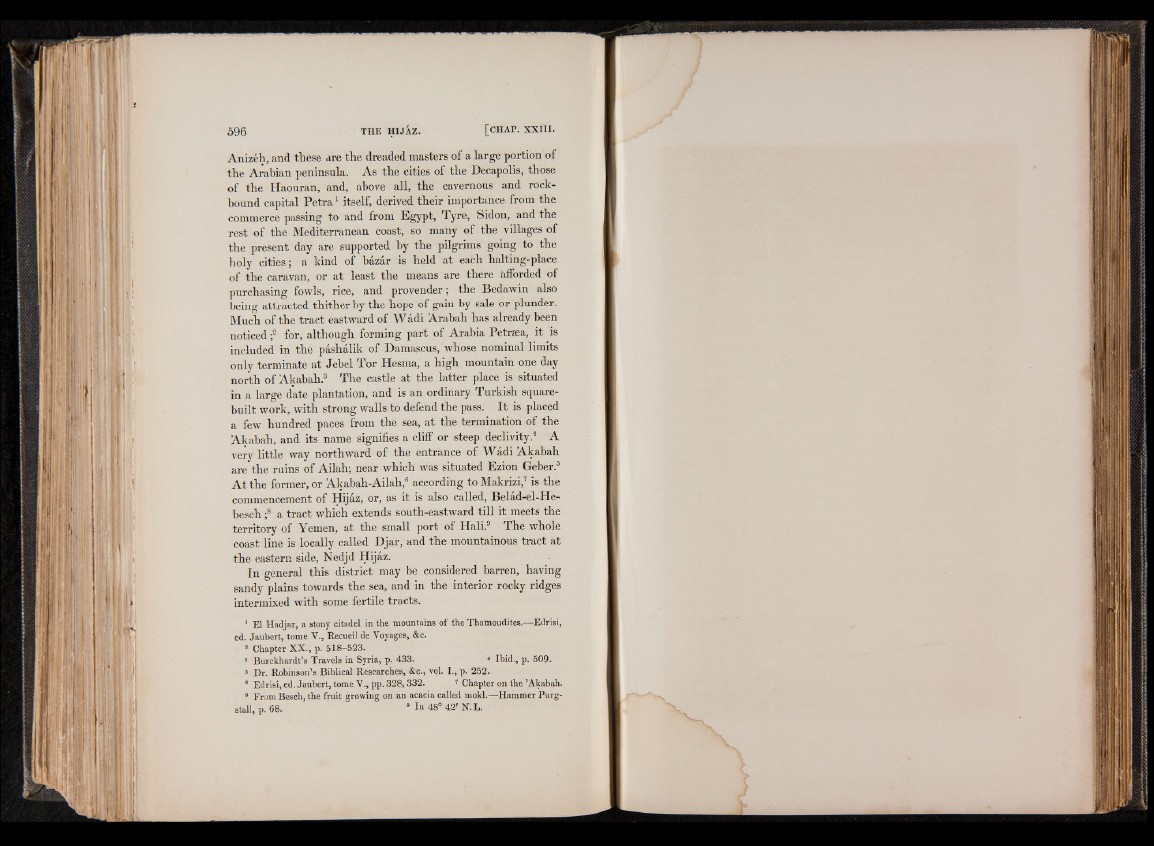
Anizeh, and these are the dreaded masters of a large portion of
the Arabian peninsula. As the cities of the Decapolis, those
of the Haouran, and, above all, the cavernous and rock-
bound capital Petra1 itself, derived their importance from the
commerce passing to and from Egypt, Tyre, Sidon, and the
rest of the Mediterranean coast, so many of the villages of
the present day are supported by the pilgrims going to the
holy cities; a kind of bazar is held at each halting-place
of the caravan, or at least the means are there afforded of
purchasing fowls, rice, and provender; the Bedawin also
being attracted thither by the hope of gain by sale or plunder.
Much of the tract eastward of Wadi Arabah has already been
noticed ;2 for, although forming part of Arabia Petrsea, it is
included in the pashalik of Damascus, whose nominal limits
only terminate at Jebel Tor Hesma, a high mountain one day
north of Akabah.3 The castle at the latter place is situated
in a large date plantation, and is an ordinary Turkish square-
built work, with strong walls to defend the pass. It is placed
a few hundred paces from the sea, at the termination of the
Akabah, and its name signifies a cliff or steep declivity.4 A
very little way northward of the entrance of Wadi Akabah
are the ruins of Ailah; near which was situated Ezion Geber.5
At the former, or Akabah-Ailah,6 according to Makrizi,7 is the
commencement of Hijaz, or, as it is also called, Belad-el-He-
besch ;s a tract which extends south-eastward till it meets the
territory of Yemen, at the small port of Hali.9 The whole
coast line is locally called Djar, and the mountainous tract at
the eastern side, Nedjd Hijaz.
In general this district may be considered barren, having
sandy plains towards the sea, and in the interior rocky ridges
intermixed with some fertile tracts.
1 El Hadjar, a stony citadel in the mountains of the Thamoudites.—Edrisi,
ed. Jaubert, tome V., Recueil de Voyages, &c.
4 Chapter XX., p. 518-523.
3 Burckhardt’s Travels in Syria, p. 433. 4 Ibid., p. 509.
5 Dr. Robinson’s Biblical Researches, &c., vol. I., p. 252.
8 Edrisi, ed. Jaubert, tome V., pp. 328,332. f Chapter on the ’Akabah.
8 From Besch, the fruit growing on an acacia called mokl.—Hammer Purgatall,
p. 68. 8 In 48° 4 2 'N.L.